George W. Hart
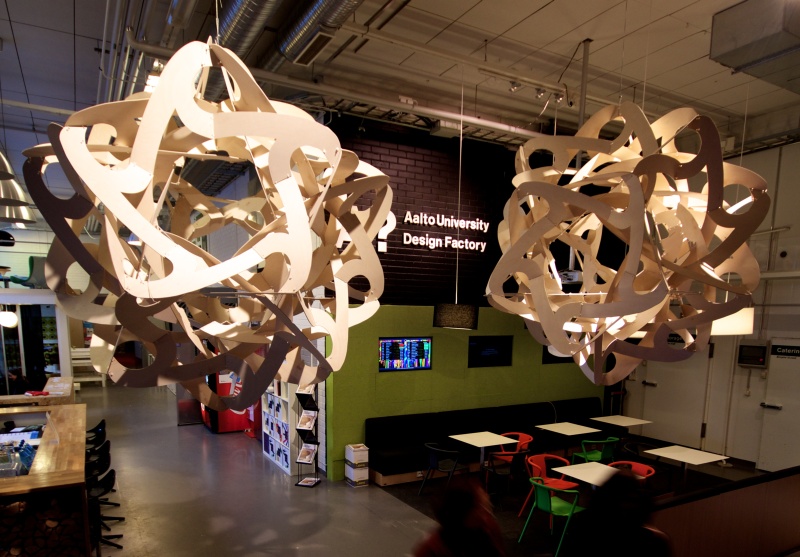
Aalto is a sculpture consisting of a pair
of 2-meter diameter orbs which I made while visiting Aalto University in
Helsinki for a week in April 2013. The sculpture and
the university are named after the Finnish architect and
designer Alvar Aalto. The doubled A of Aalto
strikes me as very appropriate in the name for this
sculpture, which consists of two almost-identical
components. Unlike the A's, the orbs are the
same size, but are mirror images. Look carefully in
the photo above to see that one is "left-handed" and the
other is "right-handed."
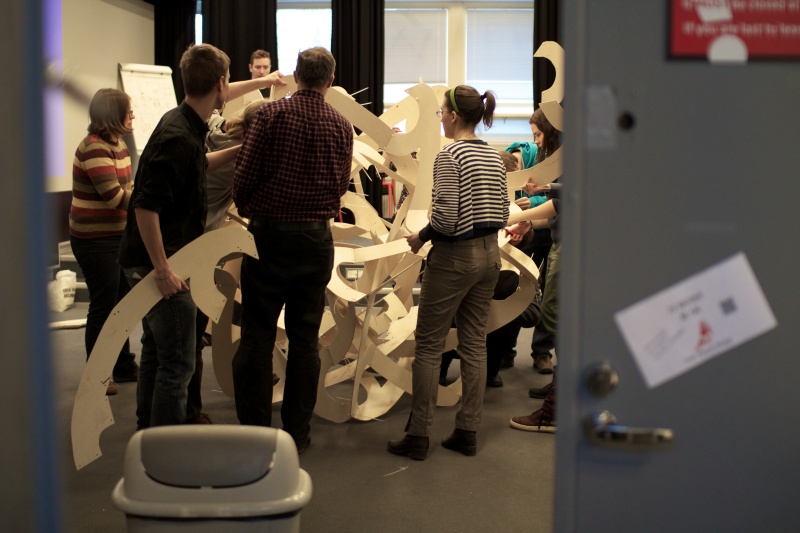
Here's a peek into the room where I led a class in the construction. This is an interdisciplinary design class called "Crystal Flowers in Halls of Mirrors: Mathematics Meets Art and Architecture” with seven instructors (Kirsi Peltonen, Jouko Koskinen, Taneli Luotoniemi, Riikka Kangaslampi, Jouko Lehtomäki, Anssi Ahlgrén, and Mikko Kauhanen) and about 25 students. Each of the orbs we are making consists of sixty identical plywood components. You can see the complete shape of the part being carried at left.
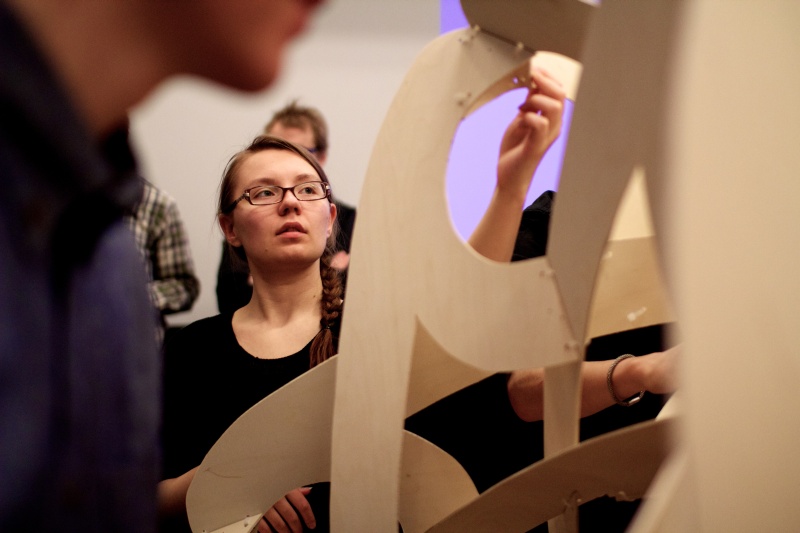
Assembling the parts required about an hour and a half for the first orb, with 25 people working together. But then we knew how to do it, so it took only 55 minutes for the second orb. This doesn't include the time for cutting and drilling the wood beforehand.
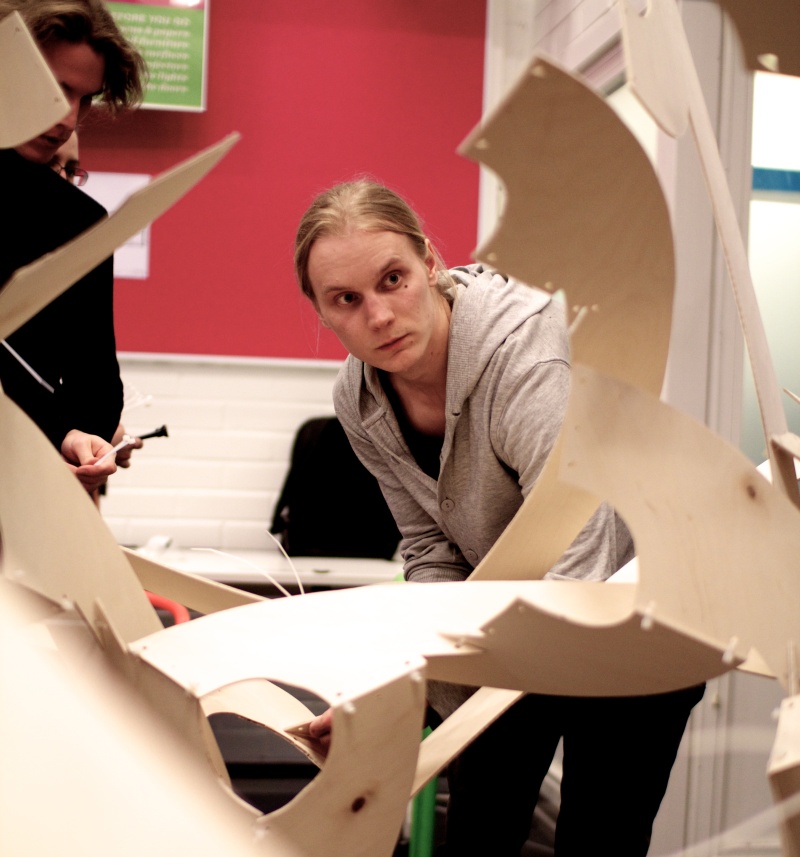
The parts have holes near their edges and are joined with cable ties through the holes. This was an experimental technique I was trying and turned out to be a very quick and strong way to assemble parts with a group. Cable ties adapt automatically to the various angles between the planes.
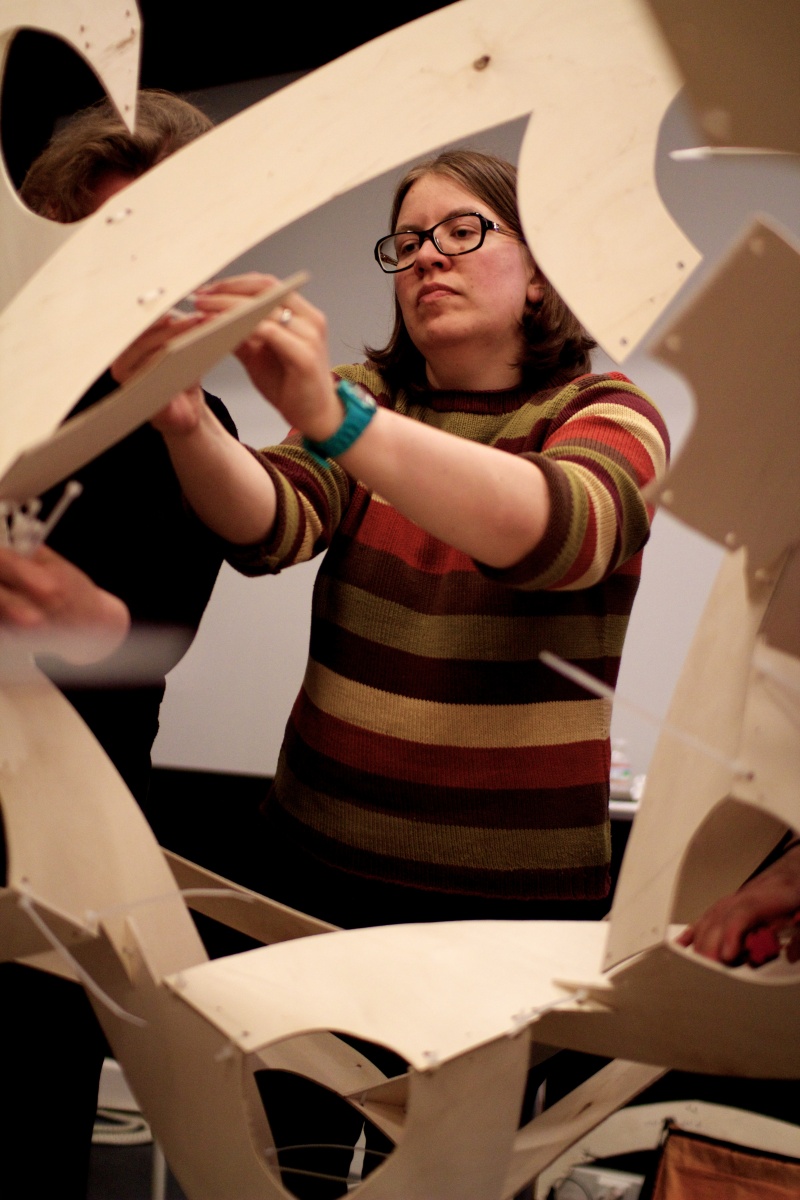
Although it is very intricate, it is highly regular, so the same types of connections are made all around in many places. And if all the local connections are correct, the global structure is automatically correct.
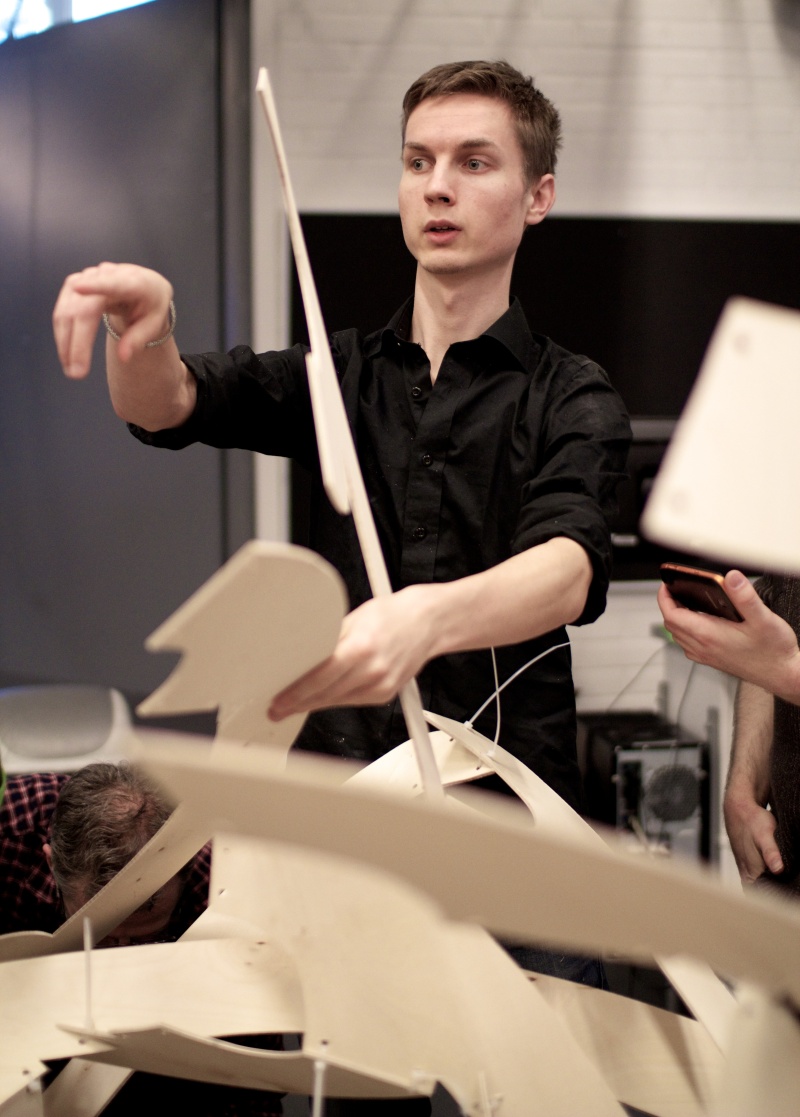
But it is rather tricky at first to see how the parts weave in front of and behind the other pieces. I had initially made some goofs and we had to cut some cable ties to correct the arrangement of modules. After that, everyone was on the lookout for any problems that might arise.
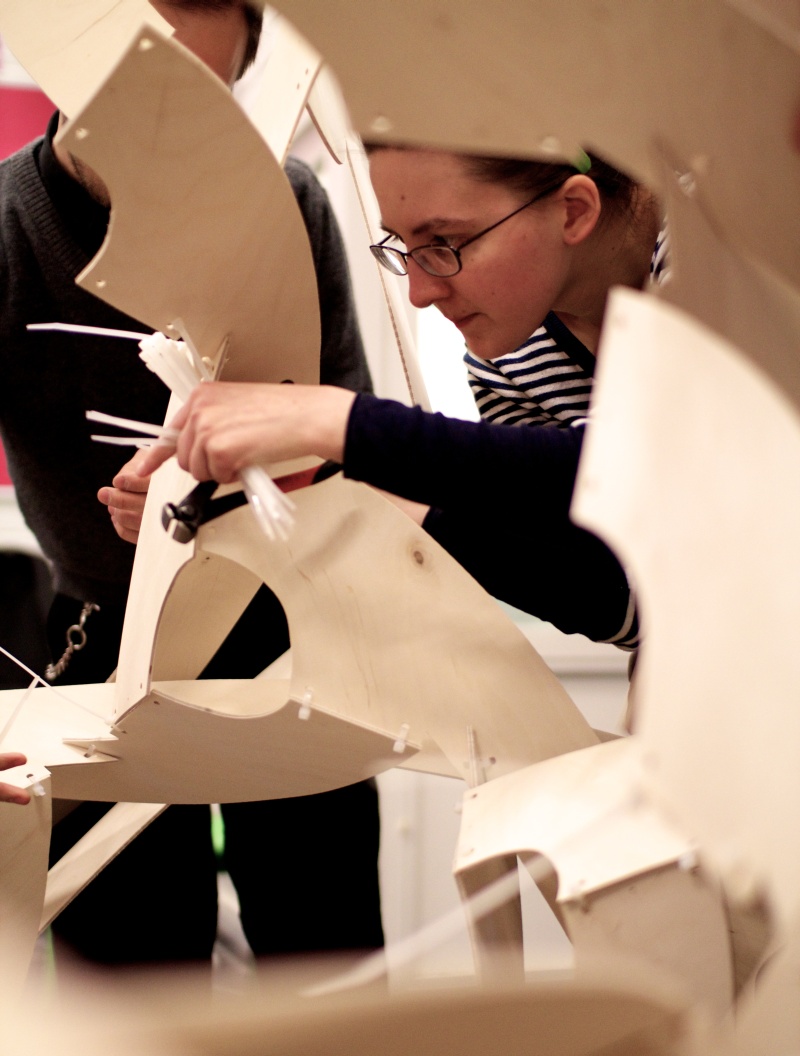
As we went along, we used wire clippers to cut all the protruding ends of the cable ties, leaving a nicely finished appearance. Each of the 60 parts has 17 holes, and each cable tie has to be threaded through 2, 3, or 4 holes, depending on its connection. In all, there are 390 ties to be attached and then clipped.
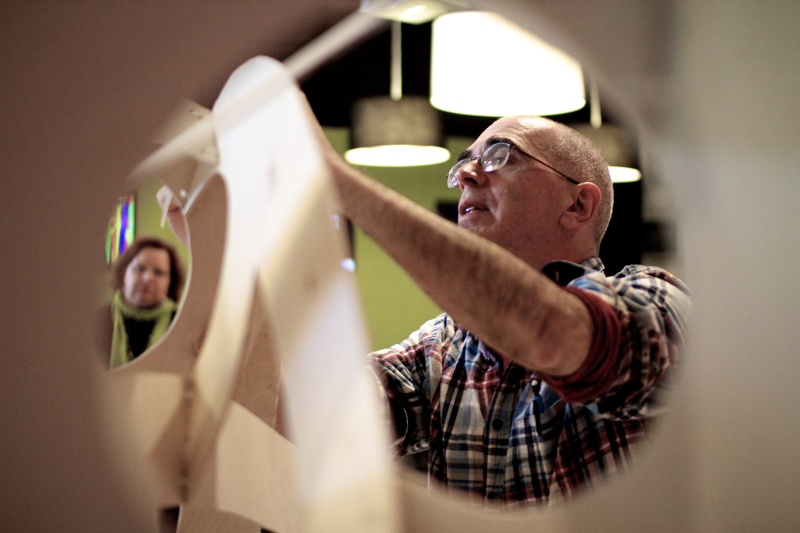
This is me in the middle of things, checking out some of the connections in the first orb. For the second orb, I didn't say a word of instructions. The group was able to make it completely on their own.
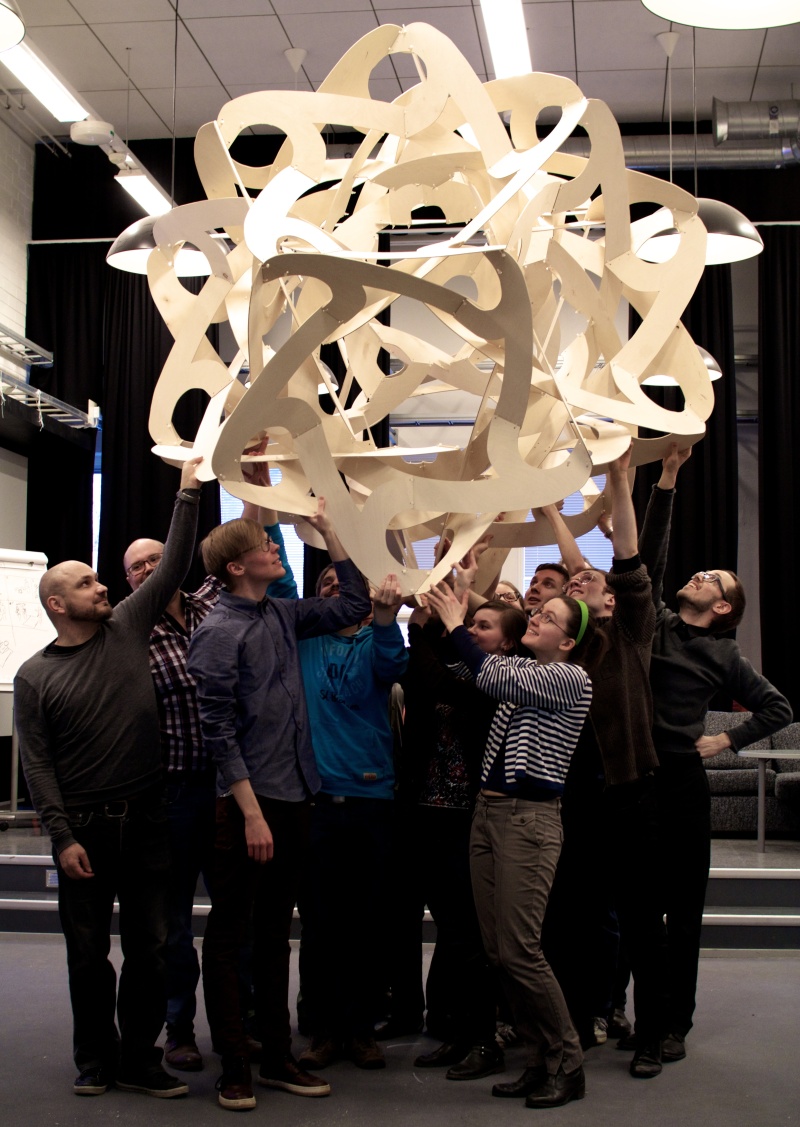
It ends up very rigid, with a very light and open feeling, simultaneously geometric and organic. I am very happy with the results.
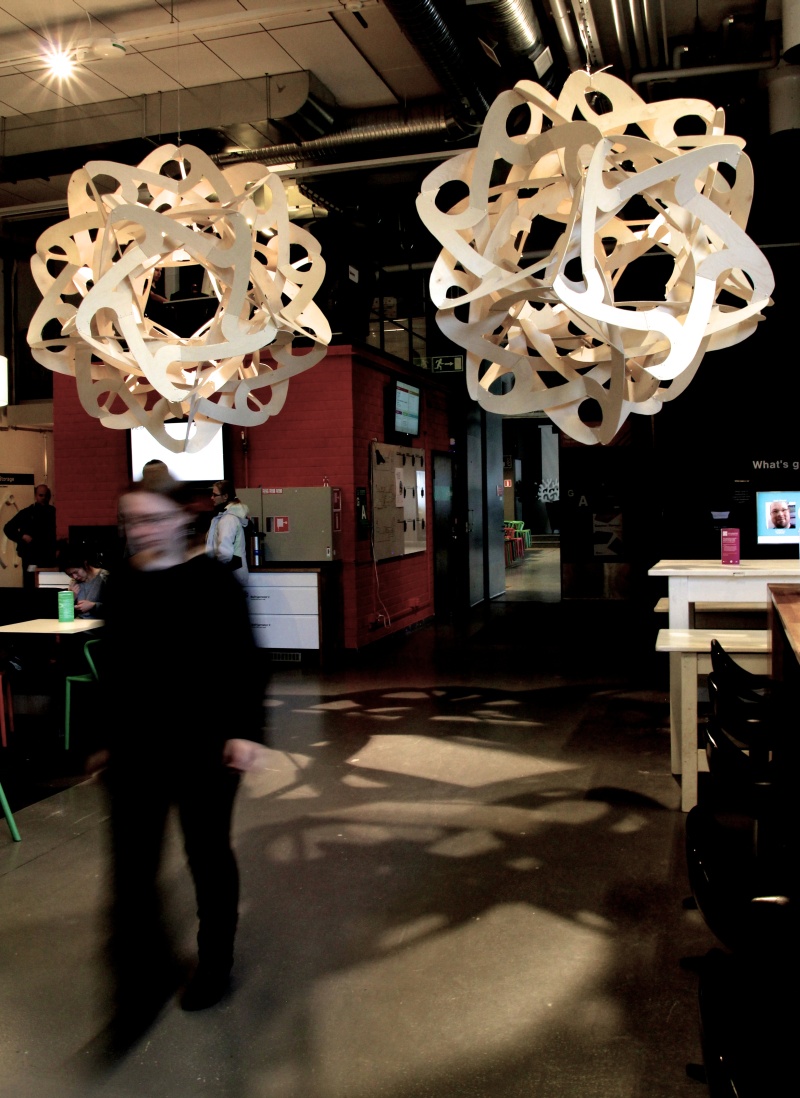
We hung them up so they can rotate freely from one point and aimed the lights so they make cool shadows as they rotate. To better understand the design, see these three videos. The last of these shows the actual construction along with the preparatory process of cutting and drilling the plywood parts, which is omitted in the images above:

Here's a peek into the room where I led a class in the construction. This is an interdisciplinary design class called "Crystal Flowers in Halls of Mirrors: Mathematics Meets Art and Architecture” with seven instructors (Kirsi Peltonen, Jouko Koskinen, Taneli Luotoniemi, Riikka Kangaslampi, Jouko Lehtomäki, Anssi Ahlgrén, and Mikko Kauhanen) and about 25 students. Each of the orbs we are making consists of sixty identical plywood components. You can see the complete shape of the part being carried at left.

Assembling the parts required about an hour and a half for the first orb, with 25 people working together. But then we knew how to do it, so it took only 55 minutes for the second orb. This doesn't include the time for cutting and drilling the wood beforehand.

The parts have holes near their edges and are joined with cable ties through the holes. This was an experimental technique I was trying and turned out to be a very quick and strong way to assemble parts with a group. Cable ties adapt automatically to the various angles between the planes.

Although it is very intricate, it is highly regular, so the same types of connections are made all around in many places. And if all the local connections are correct, the global structure is automatically correct.

But it is rather tricky at first to see how the parts weave in front of and behind the other pieces. I had initially made some goofs and we had to cut some cable ties to correct the arrangement of modules. After that, everyone was on the lookout for any problems that might arise.

As we went along, we used wire clippers to cut all the protruding ends of the cable ties, leaving a nicely finished appearance. Each of the 60 parts has 17 holes, and each cable tie has to be threaded through 2, 3, or 4 holes, depending on its connection. In all, there are 390 ties to be attached and then clipped.

This is me in the middle of things, checking out some of the connections in the first orb. For the second orb, I didn't say a word of instructions. The group was able to make it completely on their own.

It ends up very rigid, with a very light and open feeling, simultaneously geometric and organic. I am very happy with the results.

We hung them up so they can rotate freely from one point and aimed the lights so they make cool shadows as they rotate. To better understand the design, see these three videos. The last of these shows the actual construction along with the preparatory process of cutting and drilling the plywood parts, which is omitted in the images above:
- Paper model of the design
- Prototype
made of cardboard (built at a
teacher's workshop in NYC)
- Constructing
Aalto